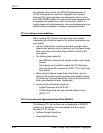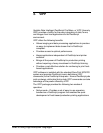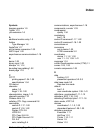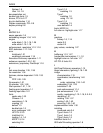
VIPP
Guide to Using Page Description Languages 3-3
• Automatic frame and zebra generation
• Form merge
• Page numbering
• Cycle form (printing of data multiple times with different
forms)
• Cycle feed (printing of data multiple times on different paper).
Operating environment
VIPP is not a converter that takes source or other PDLs and
translates them to PostScript. It is contained in the PostScript
decomposer as a set of subroutines callable from within the
PostScript language. VIPP is independent of the printer and level
of PostScript being used, and supports the entire DocuPrint
NPS/IPS family of products.
VIPP is supplied as a PostScript prologue that is loaded into the
interpreter as part of startup. Each copy of the dictionary is
licensed to a particular printer and functions only on that printer.
DocuPrint NPS/IPS supplies a demonstration license that allows
printing of VIPP documents up to 200 pages in length, without a
specific printer license. A license is required for longer
documents.
VIPP line mode extension (XGFNub)
The VIPP line mode extension (formerly called XGFNub) is a
DocuPrint NPS/IPS (Version 1.4 and higher) extension that
enables users to execute VIPP commands at the start of any
VIPP document.
Multiple sets of commands may be enabled by the
DocumentFormat attribute. To invoke a command set named
xxx, just set the DocumentFormat attribute to “XGF/xxx.”
The following is an example of the extension used to execute the
VIPP command (job1.jdt) STARTLM (command set named
“job1”) at the front of the main data file:


















